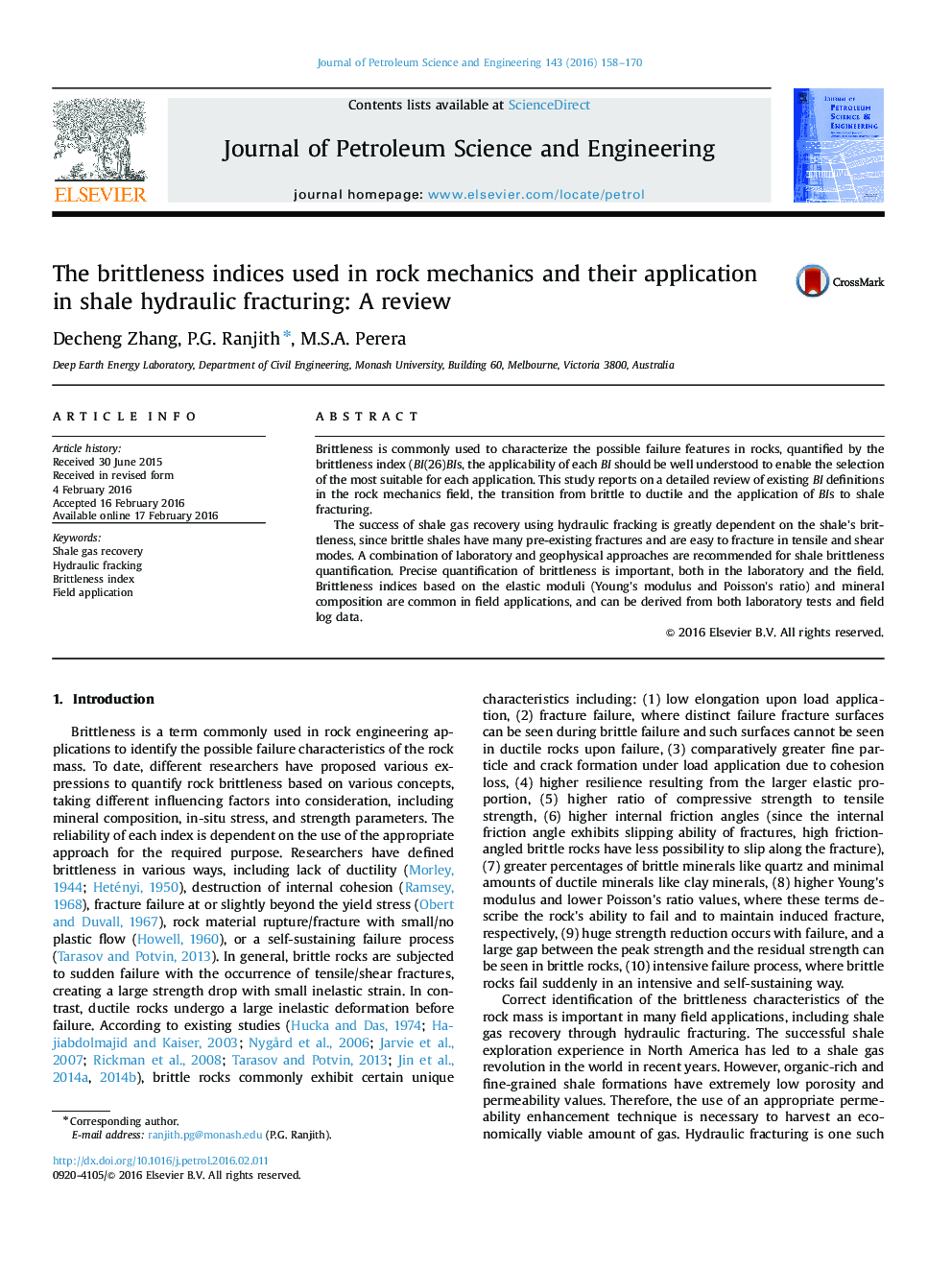| Article ID | Journal | Published Year | Pages | File Type |
|---|---|---|---|---|
| 1754578 | Journal of Petroleum Science and Engineering | 2016 | 13 Pages |
•Advantages and limitations of Brittleness Index (BI) used in rock are analyzed.•The fracturability of reservoir rocks including shale is measured using BI.•Laboratory and geophysical based BIs are suggested for shale gas reservoirs.
Brittleness is commonly used to characterize the possible failure features in rocks, quantified by the brittleness index (BI(26)BIs, the applicability of each BI should be well understood to enable the selection of the most suitable for each application. This study reports on a detailed review of existing BI definitions in the rock mechanics field, the transition from brittle to ductile and the application of BIs to shale fracturing.The success of shale gas recovery using hydraulic fracking is greatly dependent on the shale's brittleness, since brittle shales have many pre-existing fractures and are easy to fracture in tensile and shear modes. A combination of laboratory and geophysical approaches are recommended for shale brittleness quantification. Precise quantification of brittleness is important, both in the laboratory and the field. Brittleness indices based on the elastic moduli (Young's modulus and Poisson's ratio) and mineral composition are common in field applications, and can be derived from both laboratory tests and field log data.
